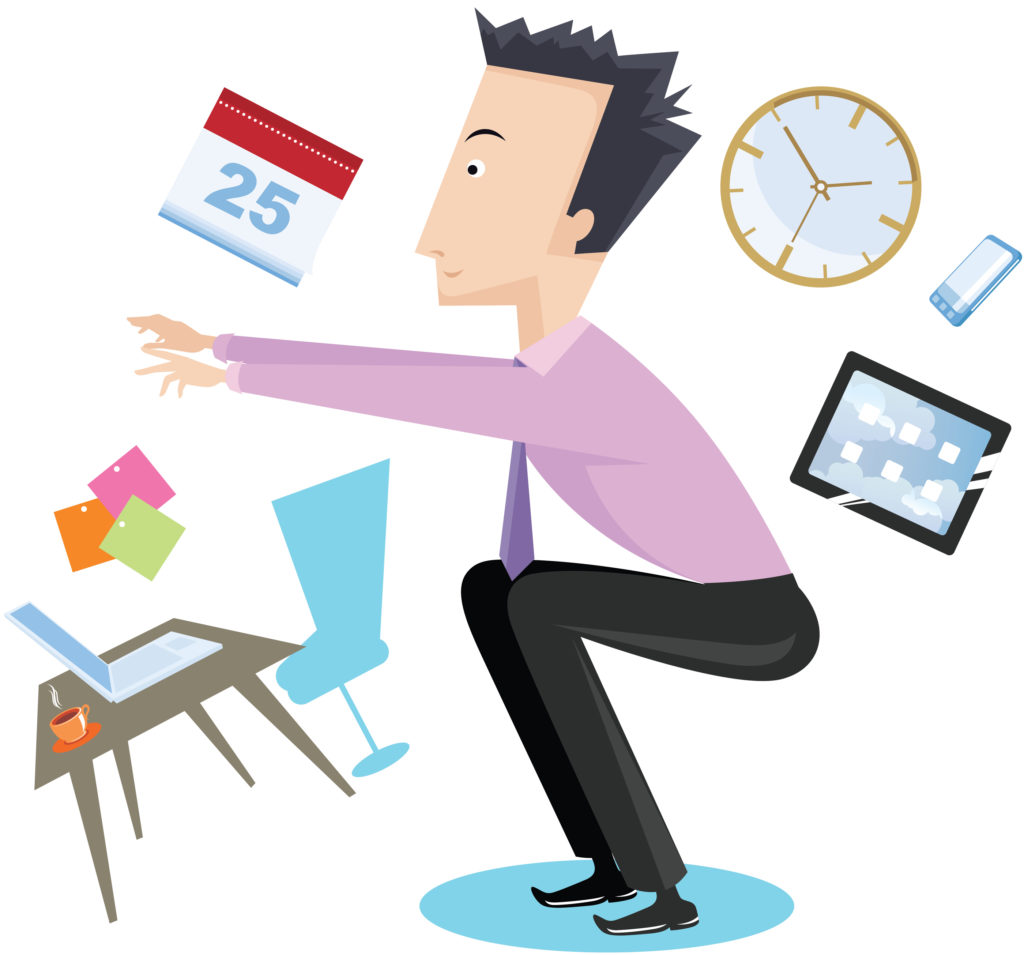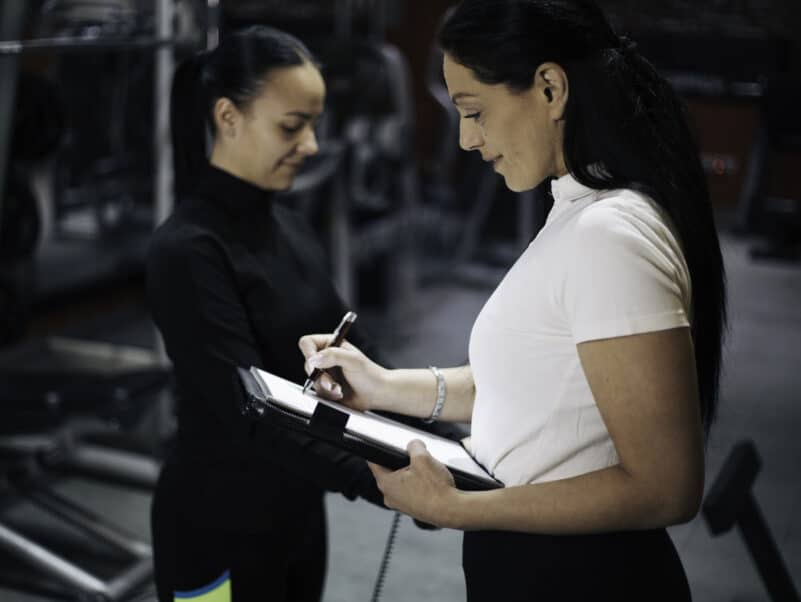Workplace Workouts

How can fitness professionals help desk jockeys boost their daily activity levels? Perhaps it’s time to change the message. Instead of focusing on the risks of inactivity—which hasn’t made much headway—maybe we should appeal to career-oriented sensibilities and explain how even 5 minutes of movement can make people more successful at their jobs.
This article reviews studies that correlate workplace exercise with job satisfaction, productivity and overall success. It also suggests simple, time-efficient workouts your clients can do at the office.
Why It’s Good to Work Out at Work
Regular exercise is essential for physical health, but knowing this may not be enough motivation to get office workers moving. Fortunately, plenty of research shows that getting in even a short walk during the workday can lead to a happier, productive and successful work experience.
Job Performance
Some people fear that exercising during the day will make it harder to get their work done. Researchers from the University of Bristol and Leeds Metropolitan University, both in England, found otherwise. They recruited 201 people from three workplaces whose jobs required little physical activity (locations were chosen because they offered worksite exercise access). Volunteers completed surveys on exercise days and nonexercise days. On exercise days, they reported improvements in mood and performance. Interestingly, performance gains happened regardless of exercise intensity and workload (Coulson, McKenna & Field 2008).
Energy Booster
Studies show that exercise—even a short walk around the building—can pump up end-of-day energy levels. For example, researchers from the University of Georgia studied a group of sedentary young adults who reported feeling low energy and fatigue. They were assigned to do low- or moderate-intensity exercise three times per week for 6 weeks. At study completion, they reported a 20% increase in energy levels and a 65% decrease in feelings of fatigue (Puetz, Flowers & O’Connor 2008).
Better Brain Power
Staring at a computer for hours on end is not the best way to achieve a critical mental breakthrough—the longer you stare, the further away the solution seems to get. Research finds that physical activity is a viable alternative for shaking loose those stubborn ideas.
In a recent study, researchers wanted to learn about the immediate benefits of exercise for cognitive ability (Hogan, Mata & Carstensen 2013). They recruited 144 people aged 19–93 who either did 15 minutes of moderate-intensity exercise or joined the nonexercise control group (which spent 15 minutes rating neutral images). The volunteers completed memory and cognition tests before and after their respective task. Overall, everyone in the exercise group experienced significantly more improvements in mental ability than the control group did, the authors stated.
Creative Stimulation
The benefits of walking are many—from improved heart health to reduced risk of premature death (Harvard Health 2009). Researchers from Stanford University have learned that lacing up for a stroll can also help with that big presentation (Oppezzo & Schwartz 2014). In this study, subjects completed the “Guilford’s alternate uses (GAU) test of creative divergent thinking” while seated and then again while walking outdoors or on a treadmill.
“Walking had a large effect on creativity,” the authors found. “Most of the participants benefited from walking compared with sitting, and the average increase in creative output was around 60%.”
Exercise = Better Paycheck
Everyone wants to earn more money. According to Vasilios Kosteas, PhD, chair of the economics department at Cleveland State University, in Ohio, pounding out some push-ups won’t just result in beefier muscles—it could also earn you a healthier paycheck. To determine this, he compared the exercise habits of similar people in similar occupations.
“I [found] that engaging in regular exercise yields a 6%–10% wage increase,” explained the professor.
Workplace Workouts
As each of these studies suggest, it doesn’t take a lot of exercise to see improvements in cognition, creativity and productivity. Here are a few simple workouts that can last anywhere from 5 to 30 minutes and don’t require anything beyond what’s available in the average office.
Full-Body Strength
Perform anywhere from 5 (beginner) to 15 (experienced) repetitions of these exercises in a circuit-style format for 5–30 minutes, resting as necessary:
Chair squats. Start seated in a chair, then stand up.
Upgrade: Do squats without the chair.
Desk push-ups. Place both hands on the desk shoulder-width apart, lower the body until the elbows reach 90 degrees, and press back to the start position.
Upgrade: Perform push-ups on the floor, either on the toes or knees or with the feet elevated on a chair.
Hip bridges. Lie on the floor face-up, knees bent to 45 degrees and feet flat on the ground. Drive the hips toward the ceiling until there is a straight line from the knees to the shoulders.
Upgrade: Place both feet on a chair and perform the exercise.
Elbow plank. Positioning yourself face-down with the elbows underneath the shoulders (like the Sphinx), rest on the knees (novice) or toes (experienced), and keep the trunk muscles tight. Hold for 10-30 seconds.
Upgrade: From elbow plank, lift one leg at time, alternating between legs.
Dips. Sit in the chair, place the hands on the side of the chair, and press down until the hips are elevated.
Upgrade: Place the body in front of the chair to increase range of motion.
For a 4-minute Tabata™-style workout and a 1-minute blitz clients can do in their offices, plus references for this article, please see “The Office Worker’s Workout” in the online IDEA Library or in the February 2016 issue of IDEA Fitness Journal. If you cannot access the full article and would like to, please contact the IDEA Inspired Service Team at (800) 999-4332, ext. 7.
Ryan Halvorson
Ryan Halvorson is an award-winning writer and editor, and IDEA's director of event programming.





